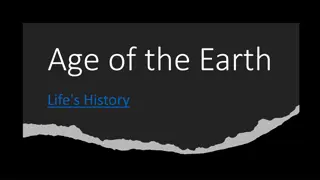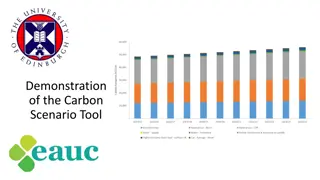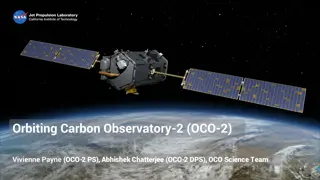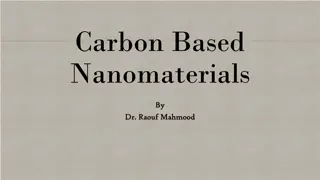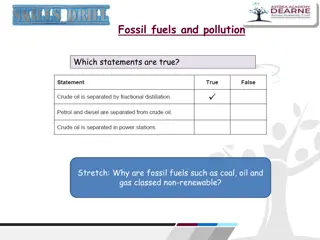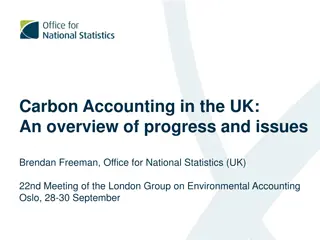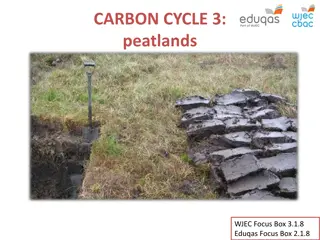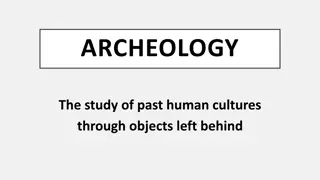Exploring Human History Through Archaeology and Carbon Dating
The timeline of Earth's 4.6 billion years condensed into a single day offers a unique perspective on the emergence of humans around 200,000 years ago. The transition from Earth's formation to human existence highlights the vast timescale where communication without writing was dominant. By examining artifacts left behind by ancient cultures, archaeologists infer about prehistoric life. Carbon dating plays a vital role in dating these artifacts, providing insights into the past.
Uploaded on Sep 11, 2024 | 0 Views
Download Presentation

Please find below an Image/Link to download the presentation.
The content on the website is provided AS IS for your information and personal use only. It may not be sold, licensed, or shared on other websites without obtaining consent from the author. Download presentation by click this link. If you encounter any issues during the download, it is possible that the publisher has removed the file from their server.
E N D
Presentation Transcript
The Earth is approximately 4.6 billion years old years condensed into one 24 hour day. The Earth begins to form here 4.6 billion years old. Imagine 4.6 billion When do humans first appear on the clock? What is happening between the formation of the earth and human existence?
What does this tell us What does this tell us about the age of the about the age of the earth compared to how earth compared to how long humans have lived long humans have lived on earth? on earth? http://www.businessinsider.com/animated-timeline-earth-history-2015-11 http://www.businessinsider.com/animated- timeline-earth-history-2015-11
When homo sapiens homo sapiens (or hominids- creatures who walk upright ) finally begin roaming the earth around 200,000 year ago, they were very different from us.
There was no writing... There was no writing... Man only learned to write 5,000 years ago (around 3,000 b.c.e) Humans, and their ancestors, lived for hundreds of thousands of years before anything was written down If the first homo sapiens appeared around 200,000 years ago, that means homo sapiens had to communicate without writing for about 190,000 years.
If early homo sapiens did not If early homo sapiens did not write things down... write things down... What problems might have What problems might have arisen? arisen? How do we know about them? How do we know about them?
Archaeologists... Archaeologists... Study the culture and societies of people who are no longer alive Study the artifacts they've left behind, since they can't observe their subjects or interview them. In the case of prehistoric people, artifacts (tools etc.) are especially important because they don t have stuff for us to read. Infer [conclude from evidence (artifacts)and reasoning rather than from explicit statements] what life must have been like.
Carbon Dating Carbon Dating How do archaeologists know how old the artifacts they dig up are? Radio Carbon Dating Radio Carbon Dating is a scientific process scientists use to figure out how old organic material is. Everything that's alive radiation from the Sun in the form of an isotope called Carbon 14. alive absorbs a type of When something dies, the Carbon 14 begins to break down We know it takes 5,000 years for Carbon 14 to breakdown, so by measuring how much Carbon 14 is left in an artifact, we can figure out how old it is.





